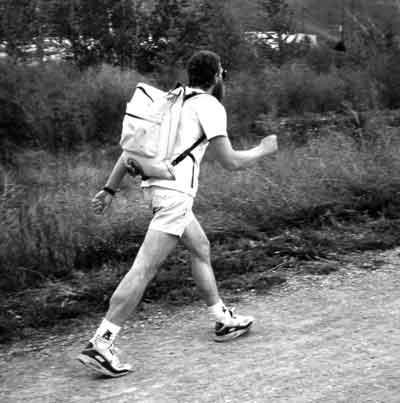
In This Issue
- Work capacity tests
- Risks of exertion
- Medical exams
- Health screening
This report, the fourth in a series, reviews activities related to the U.S. Department of Agriculture, Forest Service, Missoula Technology and Development Center (MTDC) project on wildland firefighter health and safety. The project focuses on three main areas:
Work/rest issues: Development of an objective approach for determining work/rest standards and for recommending assignment lengths for crews and overhead teams.
Energy and nutrition: Improvement of the energy intake, nutrition, and immune function of wildland firefighters.
Fitness and work capacity: Implementation of work capacity and medical standards and improvement of the health, safety, and productivity of firefighters.
"That a man must be physically sound for his work we know, but a standard of soundness has never been defined…it is urgent that a simple but effective method be used by all employing officers to ensure the rejection of the clearly unfit." Coert Dubois, 1914
|

|
The Wildland Firefighter Safety Awareness Study (Tri Data 1998) called for a new fitness test to replace the step test, which had been used since 1975. The step test, a 5-minute, submaximal procedure to estimate aerobic fitness, uses the postexercise heart rate to predict the fitness score. While the test accurately predicts aerobic fitness, variations in the heart rate response to exercise led to errors of over and underprediction. In addition, the test did not measure muscular fitness, an important component of work capacity. Some respondents in the study thought the test was too easy. Others were concerned about the potential for cheating with breathing maneuvers or drugs.
The study recommended several work capacity tests that were valid, job-related, and gender neutral to meet National Wildfire Coordinating Group standards (NWCG 310-1). After extensive field trials, the following tests were adopted to determine a worker’s capacity: the pack test (for arduous work), the field test (for moderate work), and the walk test (for light work). While the tests have met widespread approval among firefighters, test-related fatalities have led to a reexamination of the tests and the procedures for test administration. This report reviews the test development process, and issues of safety, medical screening, and test administration.

